[Home][Up]
The Arctic Oscillation signature in the wintertime geopotential height and temperature fields
David W.J. Thompson and John M. Wallace
Published in Geophysical Research Letters
Vol. 25, No. 9, 1297-1300, May, 1998
Abstract
The leading empirical orthogonal function of the wintertime sea-level pressure field is
more strongly coupled to surface air temperature fluctuations over the Eurasian continent than the
North Atlantic Oscillation (NAO). It resembles the NAO in many respects, but its primary center
of action covers more of the Arctic, giving it a more zonally symmetric appearance. Coupled to
strong fluctuations at the 50-hPa level on the intraseasonal, interannual, and interdecadal time
scales, this "Arctic Oscillation" (AO) can be interpreted as the surface signature of modulations in
the strength of the polar vortex aloft. It is proposed that the zonally asymmetric surface air
temperature and mid-tropospheric circulation anomalies observed in association with the AO may be
secondary baroclinic features induced by the land-sea contrasts. The same modal structure is
mirrored in the pronounced trends in winter and springtime surface air temperature, sea-level
pressure, and 50-hPa height over the past 30 years: parts of Eurasia have warmed by as much as
several K, sea-level pressure over parts of the Arctic has fallen by 4 hPa, and the core of the lower
stratospheric polar vortex has cooled by several K. These trends can be interpreted as the
development of a systematic bias in one of the atmosphere's dominant, naturally occurring
modes of variability.
Postscript file containing PostScript file of the full manuscript and figures.
Corresponding author: Dave Thompson (davet@atmos.washington.edu)
SUPPLEMENTARY COLOR VERSIONS OF THE FIGURES ARE INCLUDED BELOW
(Click on color figures to download)
Figure 1: Regression Maps
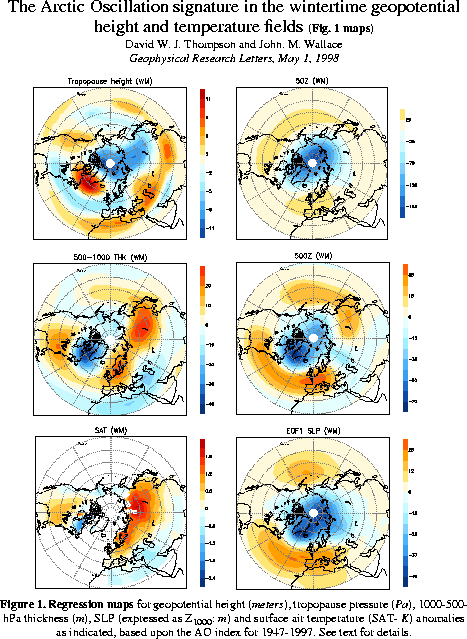
Figure 1: Time Series
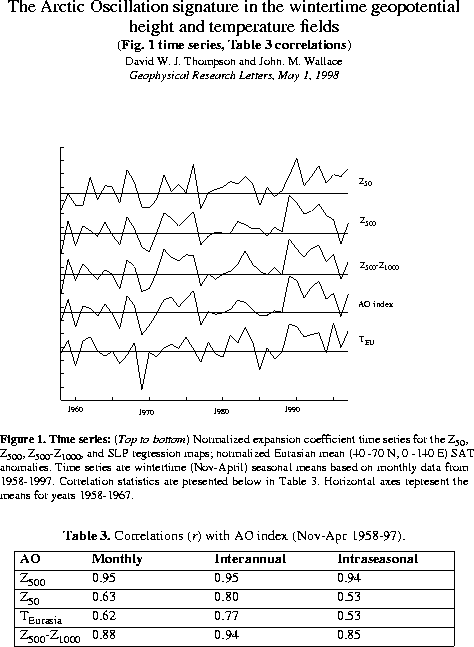
Figure 2
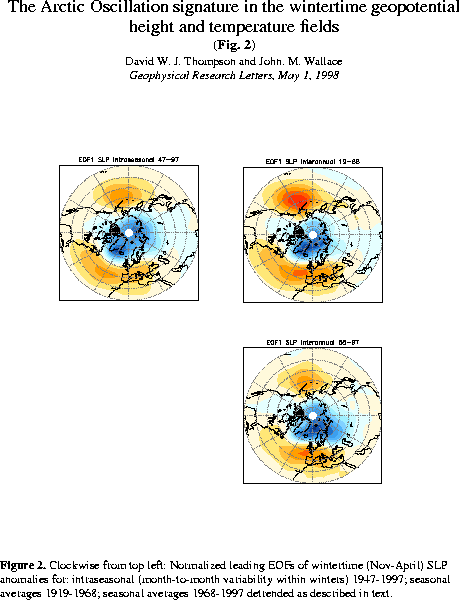
Figures 3 and 4
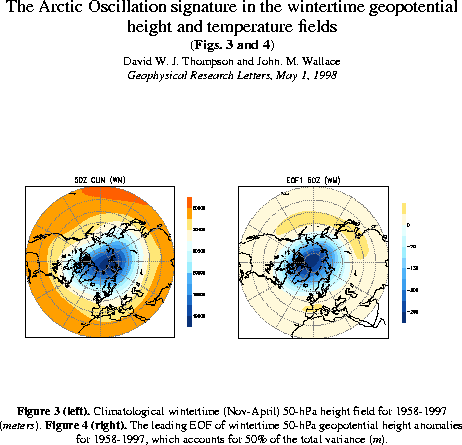
Figure 5
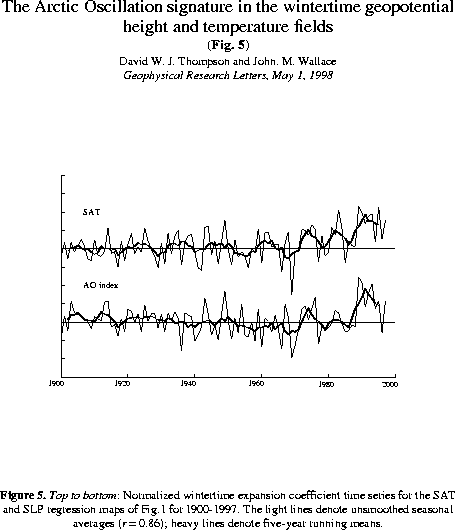
Figure 6
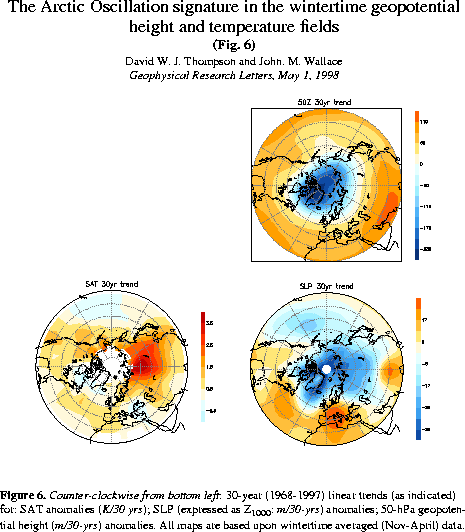
[Home][Up]











